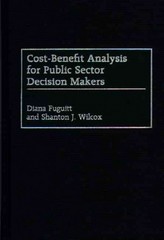Question
Case 7-1: Use the information below to answer Questions 1 - 4. A business purchased a machine that had a total cost of $220,000 and
Case 7-1: Use the information below to answer Questions 1 - 4.
A business purchased a machine that had a total cost of $220,000 and a residual value of $20,000. The asset is expected to service the business for a period of 10 years or produce a total of 1,000,000 units.The machine was purchased January 1st of the current year and has been in service one complete year.
1.Refer to Case 7-1.What is the depreciable cost of the asset?
A.$180,000
B. $200,000
C. $220,000
D.$20,000
2.Refer to Case 7-1. Using the straight-line method, what is the amount of depreciation expense in year two of the asset's life?
A.$40,000
B.$22,000
C.$20,000
D.$44,000
3. Refer to Case 7-1.Now assume the business uses the units-of-production method. If the asset produces 250,000 units in year one and 200,000 units in year two, what is book value at the end of year two?
A.$130,000
B.$110,000
C.$90,000
D.$121,000
4. Refer to Case 7-1. What is the depreciation expense in year one, if the double-declining-balance method is used?
A.$20,000
B.$40,000
C.$22,000
D.$44,000
5.The entry to record annual depreciation includes a:
A.credit to Depreciation Expense.
B.credit to Accumulated Depreciation.
C.debit to Accumulated Depreciation.
D.credit to the asset account.
6. In calculating the total cost of land, all costs are included except:
A.survey fees.
B.real estate agent's commission.
C.fencing.
D.purchase price.
7.If a plant asset is sold and a loss is incurred, the entry to record the sale would include a credit to:
A.Plant Asset.
B.Loss on Sale of Asset.
C.Cash.
D.Accumulated Depreciation.
8.Which of the following statements is TRUE?
A.Allocating the cost of a plant asset over its useful life is called depletion.
B.Intangible assets are amortized.
C.Allocating the cost of a natural resource to an expense is called depreciation.
D.All of the above are true.
9. Return on assets:
A.is calculated as net income/average total assets.
B.is calculated as average total assets/net income.
C.is calculated as net income/net sales.
D.measures the amount of sales dollars generated by each dollar of assets invested in the business.
10.Bradley reported the following during the current year:
Depreciation expense, $16,000
Gain on the sale of land, $12,900
Purchase of new equipment, $36,800
Cash received from sale of land, $94,700
Bradley's net cash flow from investing activities as reported on the cash flow statement would be:
A.$41,900
B.$54,800
C.$70,800
D.$57,900
11.Which statement regarding "available-for-sale investments" is true?
A.If the business plans to sell the investments within a year, they are classified as long-term investments.
B.Available for sale investments generally comprise up to 20%, but not including 20%, ownership.
C.Both A and B are true.
D.Neither A nor B is true.
12.When an available-for-sale investment is sold:
A.a realized gain or loss cannot be recorded.
B.a realized gain or loss is reported as an expense on the Income Statement.
C.the amount of the realized gain or loss is the difference between the amount received and the cost of the investment.
D.all of the above occur.
13.Which of the following is true regarding equity-method investments?
A.Gain or loss on the sale of an equity-method investment is the difference between the sale proceeds and the original cost of the investment.
B.The account Equity-method Investment is increased for the receipt of a dividend on an equity-method investment.
C.both of the above are true.
D.none of the above are true.
14.Under the equity method, when an investee company records income, the investor company
A.makes this entry to record its share of the revenue:
Equity-Method InvestmentXX
Equity-Method Investment RevenueXX
B.makes this entry to record its share of the revenue :
Equity-Method Investment RevenueXX
Equity-Method Investment XX
C.will debit Cash to report its share of the income.
D.does not make an entry since it is the investee company's income.
15. Which of the following is/are eliminated in the preparation of a consolidated balance sheet?
A.Intercompany receivables and payables
B.Stockholders' equity of the subsidiary
C.Investment account
D.All of the above
16.For $1,000 you can purchase a 5-year ordinary annuity that will pay you a yearly payment of $263.80 for 5 years. The compound annual interest rate implied by this arrangement is closest to:
A.8%
B.9%
C.10%
D.11%
17.To increase a present value, the discount rate should be adjusted:
A.Upward
B.Downward
C.Laterally
D.Backwards
18.If one intangible asset is exchanged for another, the cost of the intangible is measured at:
A.Book Value
B.Fair value
C.Present value
D.Estimated value
19.Where is the amortization of an intangible asset recognized?
A.Income Statement
B.Equity
C.Statement of Financial Position
D.Statement of Cash Flows
20.When an intangible asset is sold, the gain or loss is recognized:
A.in Equity
B.on the Income Statement
C.in the Statement of Financial Position
D.in the Statement of Cash Flows
Step by Step Solution
There are 3 Steps involved in it
Step: 1

Get Instant Access to Expert-Tailored Solutions
See step-by-step solutions with expert insights and AI powered tools for academic success
Step: 2

Step: 3

Ace Your Homework with AI
Get the answers you need in no time with our AI-driven, step-by-step assistance
Get Started


